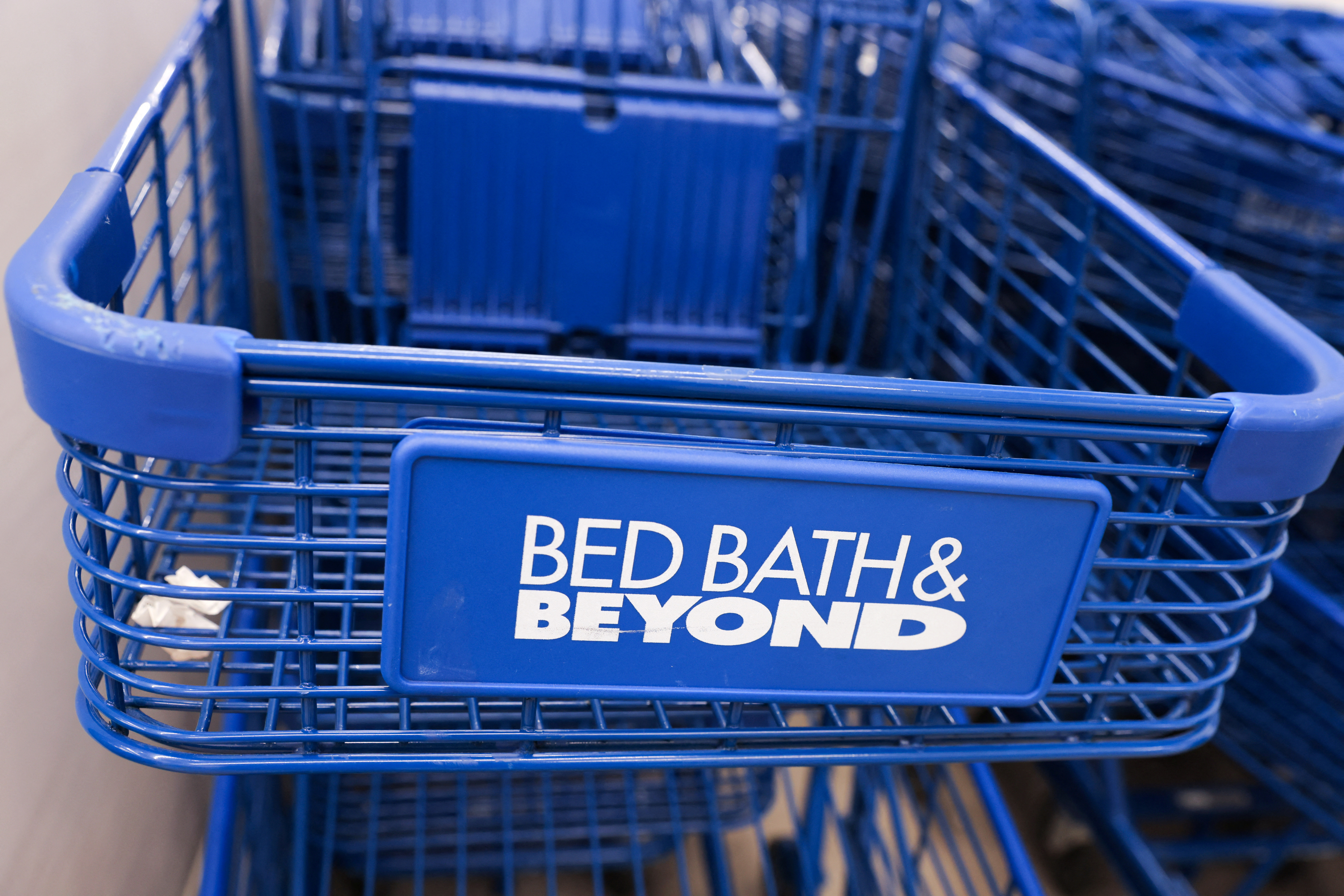
Bed Bath & Beyond Inc (BBBY.O) on Tuesday reported a third-quarter loss of $393 million after early holiday shopping failed to provide a big shot in the arm and a respite from its months’ long cash burn.
The home goods seller’s dismal results come after the company said last week it was exploring options, including bankruptcy, following its taking on of $375 million in financing in August and failing to convince bondholders to swap out their investments for new debt earlier this month. The company said last year that it would close 150 stores and lay off corporate employees among other cost-saving measures.
“It’s clear to us that ‘behind the scenes’ conversations are pointing in the direction of bankruptcy,” Wells Fargo analyst Zachary Fadem said in a note.
The company did not indicate whether it would file for bankruptcy protection after saying last week it was working with outside advisers to look at various options after years of weakening sales.
Bed Bath & Beyond did not take questions from analysts on its Tuesday conference call “in light of the ongoing review of strategic alternatives,” said Susie Kim, head of investor relations.
Its shares were up 17.2% at $1.90 amid speculation by retail investors that it could be a potential acquisition target.
The New Jersey-based company’s quarterly loss for the fiscal third quarter ended Nov. 26 includes an impairment charge of about $100.7 million, signaling that its inventory is not worth the value it originally estimated.
“It’s definitely a cause for concern,” bankruptcy lawyer Daniel Gielchinsky said. Gielchinsky, who does not represent Bed Bath & Beyond, said its decline in debt-to-equity ratio for two consecutive quarters is “the classic reason or legal justification for bankruptcy.”
Bed Bath & Beyond reported $153.5 million in cash and cash equivalents, a steep year-over-year decline from $509 million which could make it challenging for the retailer to secure more merchandise for its stores.
Bed Bath & Beyond said it started cost reductions of about $80 million to $100 million across the business, including overhead expenses and headcount.
Net sales fell 33% to $1.26 billion in the third quarter as inflation strained consumers’ pockets and shoppers focused on products other than home goods, furniture and decor – merchandise that is core to Bed Bath & Beyond’s inventory mix – for their early holiday and Black Friday purchases.
Its inventory fell to $1.44 billion in the third quarter, down 24.9% year-on-year, after shedding some of its owned brands including Wild Sage and offering steep Black Friday discounts to clear excess merchandise.
Chief Executive Sue Gove said the company did not meet its goals in changing Bed Bath & Beyond’s assortment as it dealt with “credit line constraints” and vendors seeking quicker payments.
“This led to lower receipts and, therefore, lower in-stock levels, in the 70% range, which hampered our sales further in an already competitive environment,” Gove said.
The retailer’s recent emphasis on private-label brands led it to cut back on orders of nationally branded merchandise, hurting its relationships with some vendors, one former Bed, Bath executive said.
Despite efforts to increase national brands including Cuisinart and UGG to lure shoppers to stores, the company’s foot traffic fell 23.1% in November compared with the previous year, according to data from Placer.ai.
The big-box retailer is considering skipping its debt payments due on Feb. 1 to conserve cash ahead of a possible bankruptcy filing, Reuters reported earlier.
Morningstar analyst Jaime Katz expects a Bed Bath & Beyond bankruptcy filing in the first half of the year. She pointed to “the unwillingness of lenders to participate in a debt swap” as evidence creditors are unlikely to take on “incremental financial” risk.
The retailer reported a non-GAAP loss of $3.65 per share, wider than Wall Street’s estimate of a loss of $2.23 per share.

